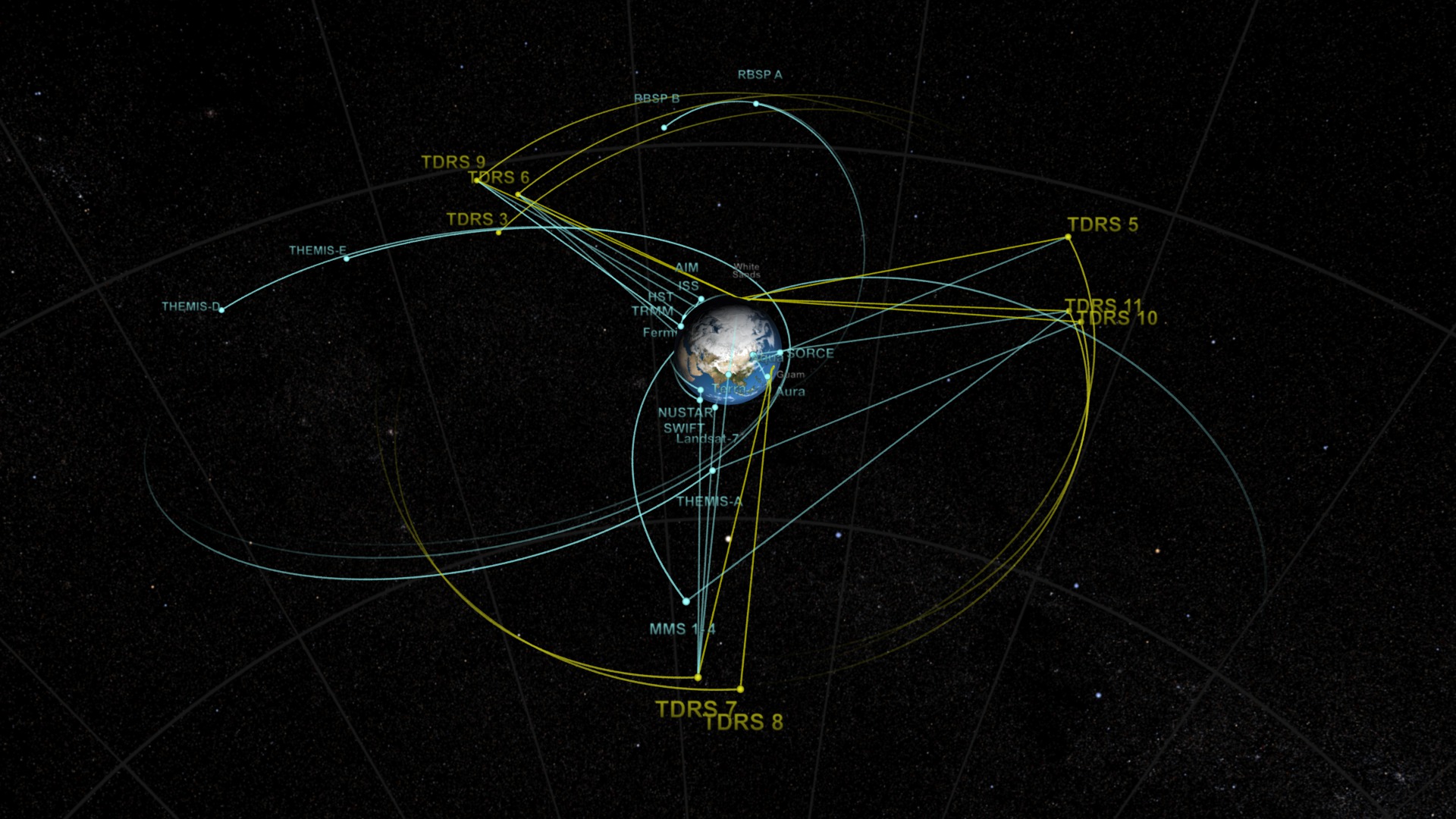The Network
Names like the Hubble Space Telescope and the International Space Station frequently make headline news for their groundbreaking achievements. Such stardom, however, would be difficult without the crucial support of NASA’s lesser known Tracking and Data Relay Satellites, or TDRS. The eight satellites that currently compose the fleet provide continuous connectivity for sending navigation, data and voice transmissions from Earth to the space station, Hubble and a host of other spacecraft. Without them, communications with ground stations would be limited to just 15 percent of the time. Watch the video to learn more.

NASA’s solution for obtaining unlimited talk, text and data in space.
Find out how the TDRS fleet keeps NASA connected to its spacecraft in this video.

NASA launched the first of a series of TDRS satellites, similar to the one shown here, in 1983.

The International Space Station routes voice and video communications along with data through the TDRS fleet.

Two ground stations relay data between TDRS satellites and the various mission operations centers.
Credits
Please give credit for this item to:
NASA's Goddard Space Flight Center
-
Animators
- Greg Shirah (NASA/GSFC)
- Walt Feimer (HTSI)
- Michael Lentz (USRA)
- Chris Meaney (HTSI)
- Ernie Wright (USRA)
-
Video editor
- Stuart A. Snodgrass (HTSI)
-
Narration
-
Narrator
-
Producer
- Stuart A. Snodgrass (HTSI)
-
Project support
- Aaron E. Lepsch (ADNET Systems, Inc.)
- Cheryl Gramling (NASA/GSFC)
-
Writer
- Kathryn Hansen (Wyle Information Systems)
Release date
This page was originally published on Tuesday, February 11, 2014.
This page was last updated on Wednesday, May 3, 2023 at 1:51 PM EDT.
